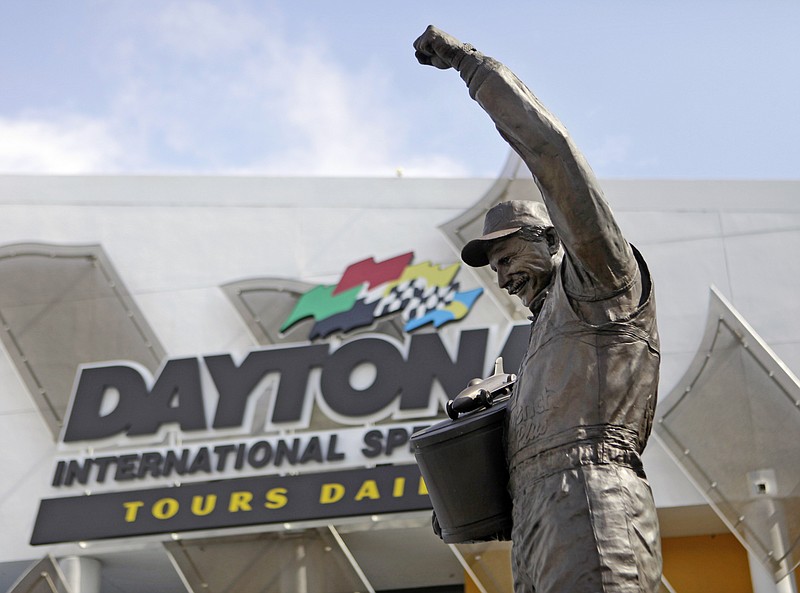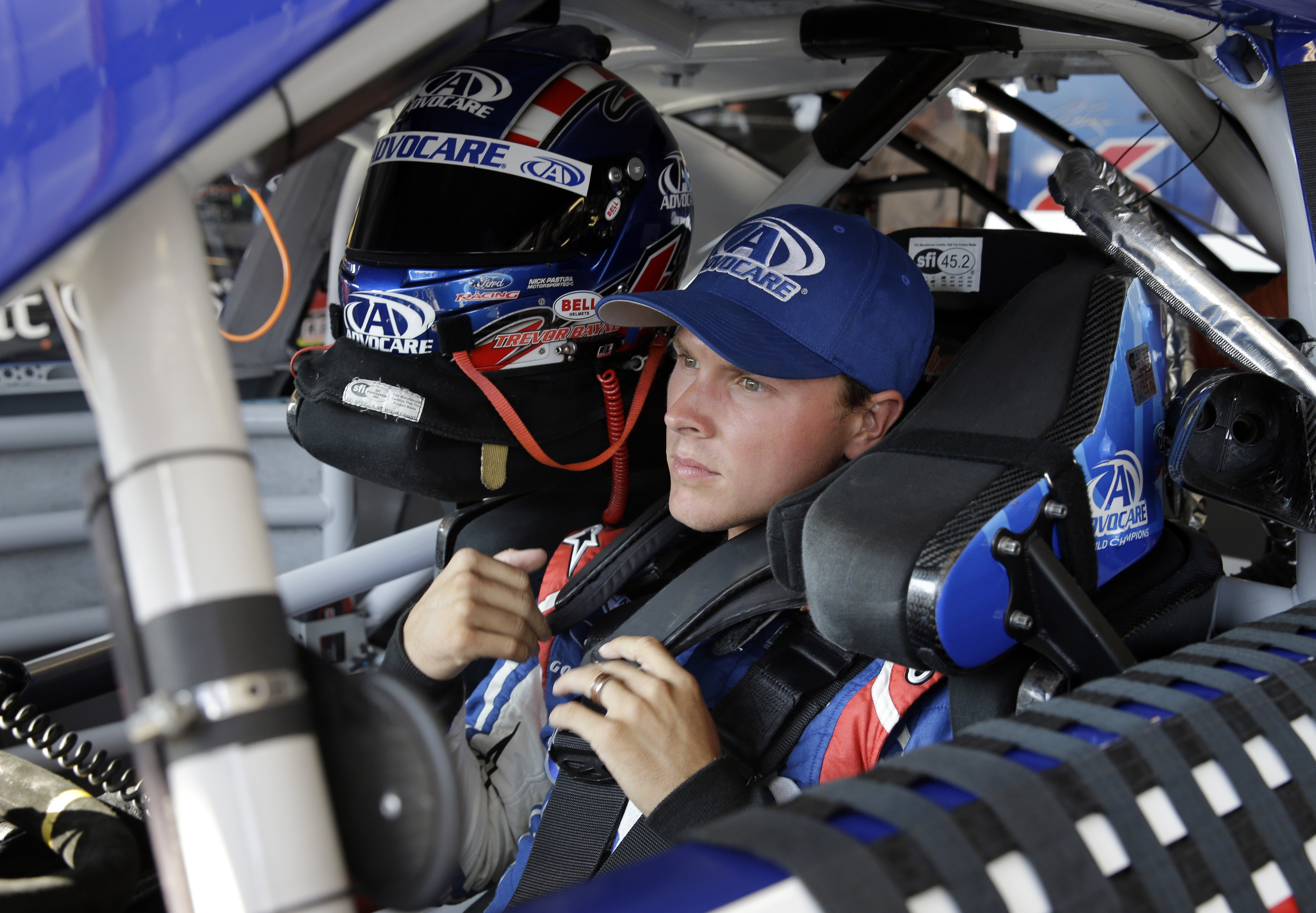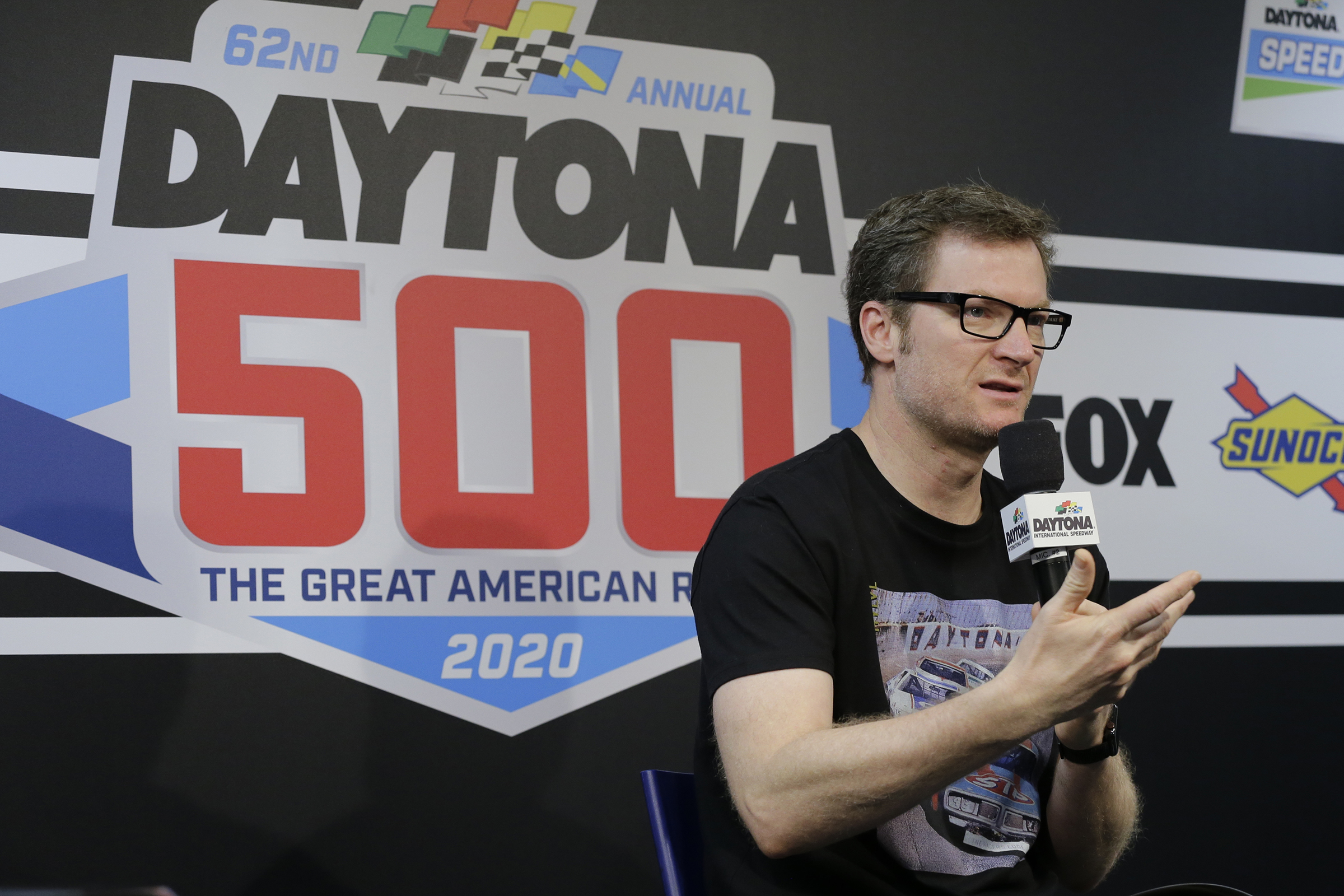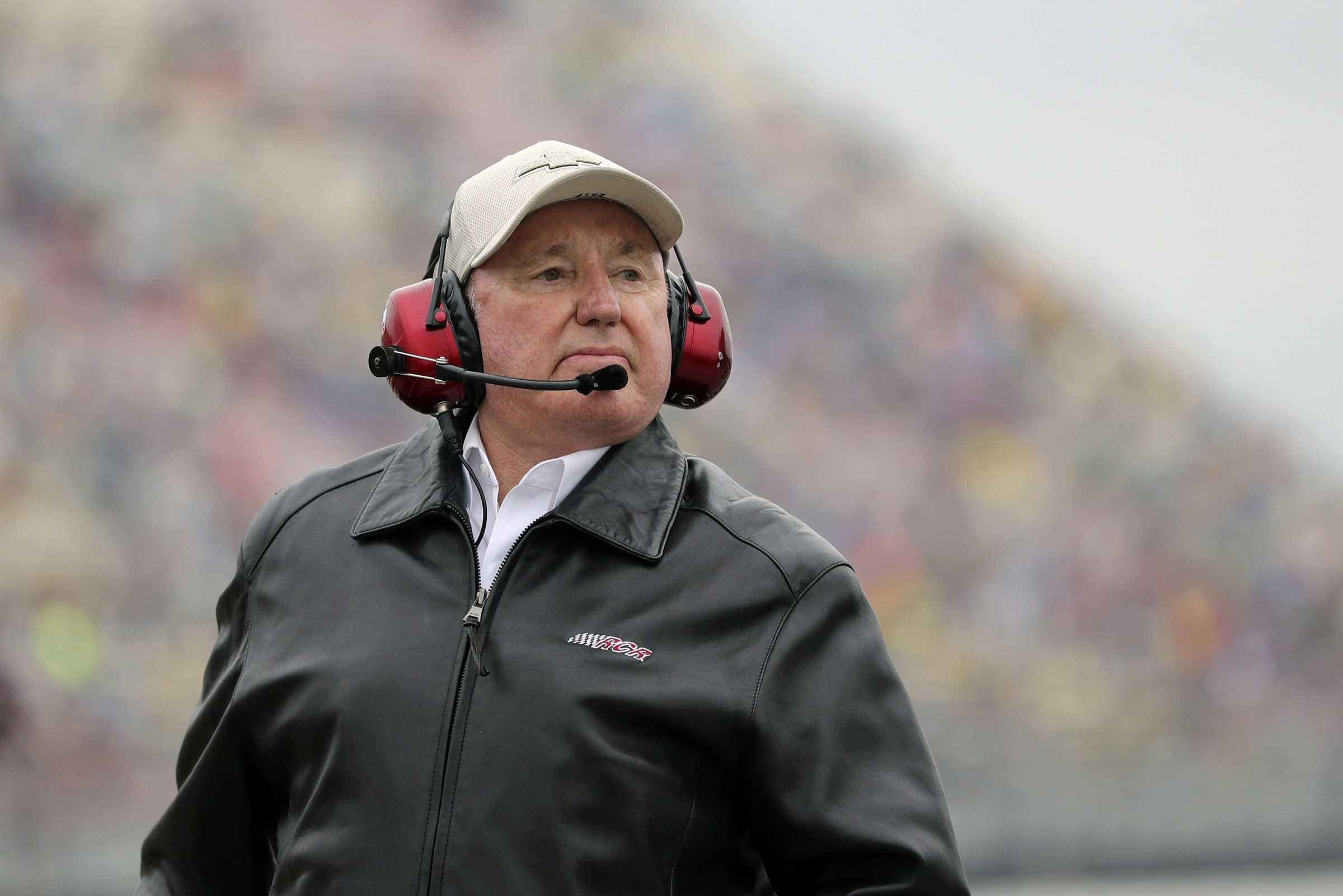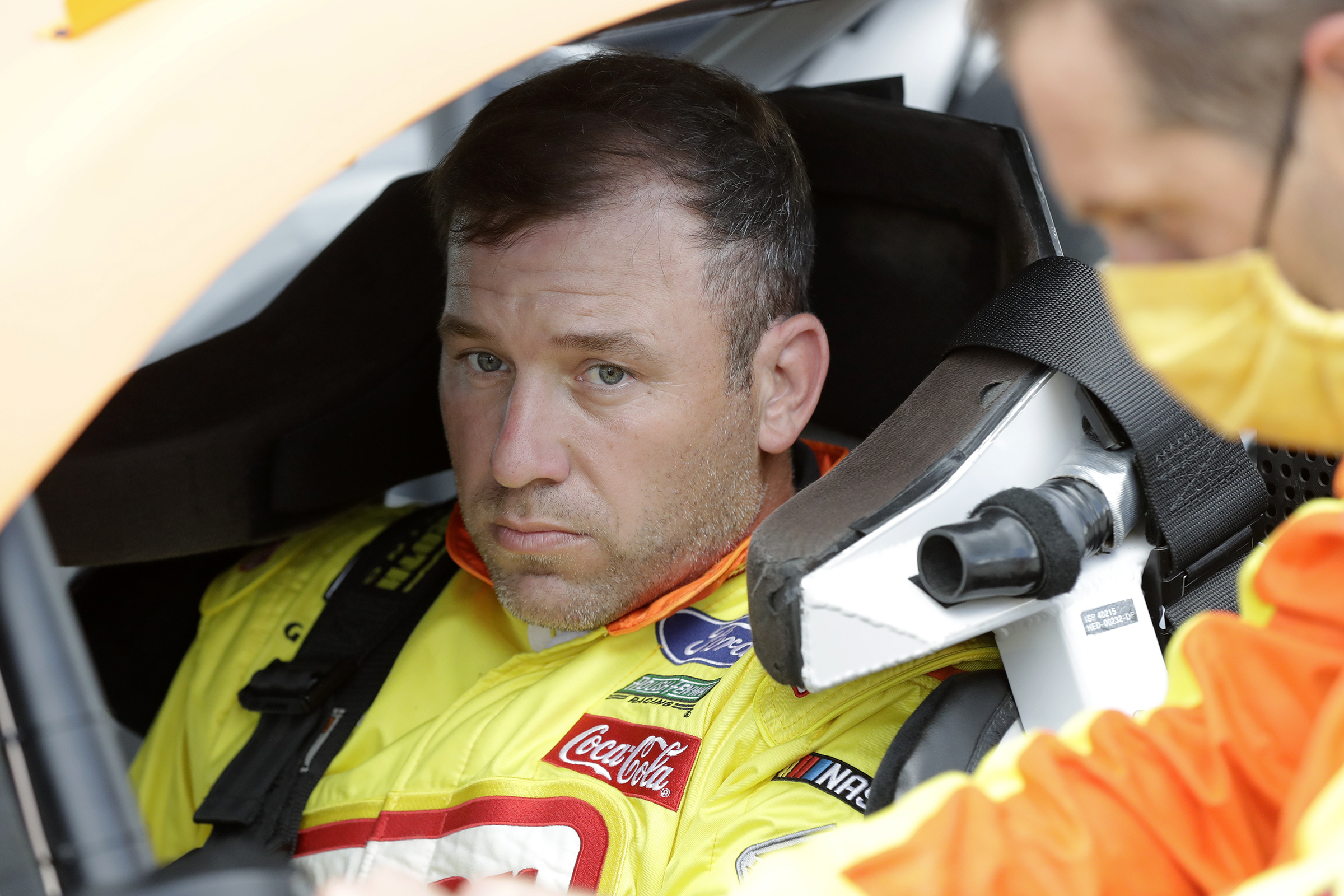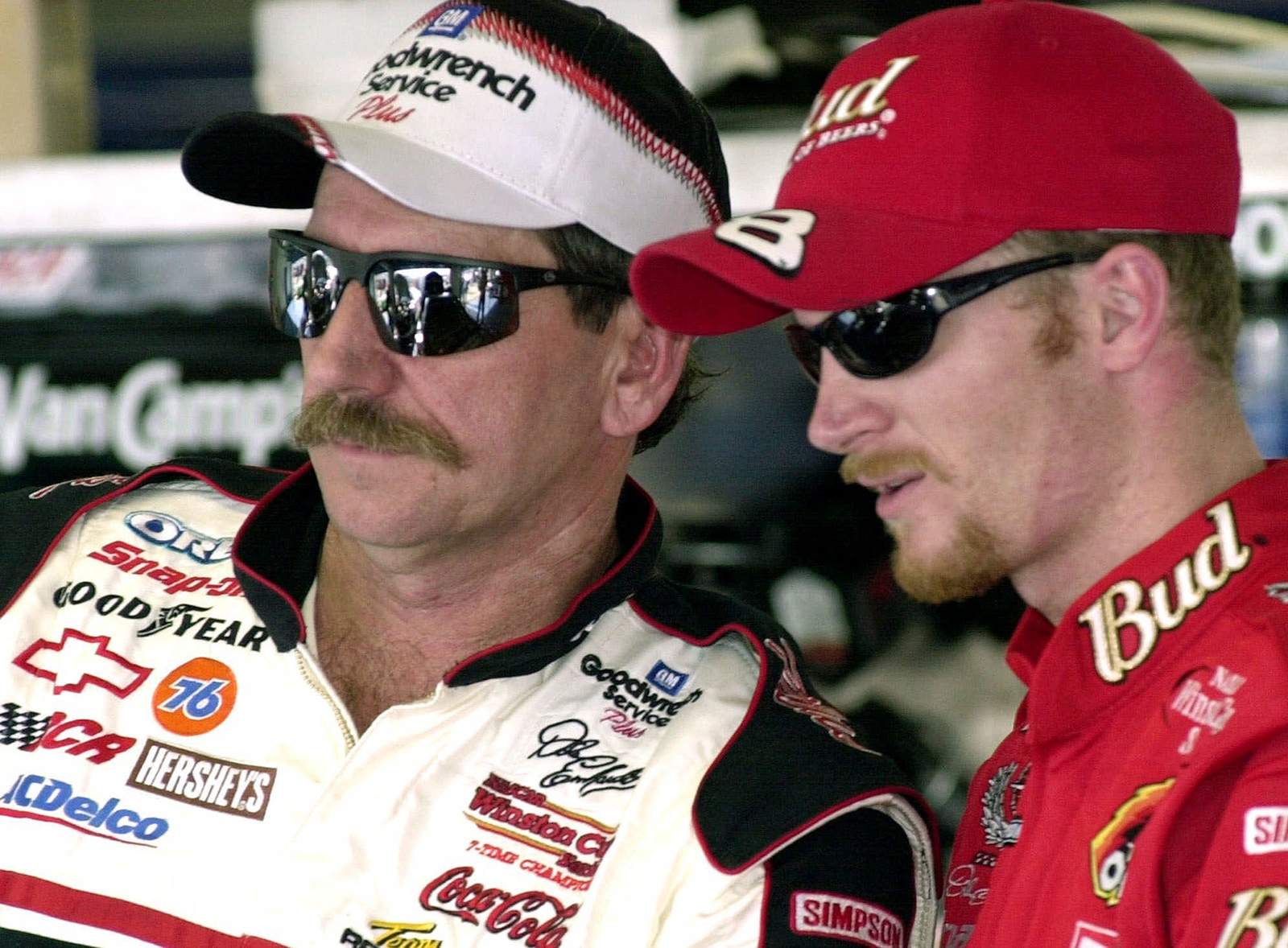 AP photo by Paul Kizzle / NASCAR drivers Dale Earnhardt, left, and his son, Dale Earnhardt Jr., stand together during a Cup Series practice on Feb. 9, 2001, at Daytona International Speedway in Daytona Beach, Fla. Nine days later, with his son racing ahead of him to a second-place finish, Earnhardt was killed in a crash on the final lap of the Daytona 500. The seven-time Cup Series champion was 49, and the ripple effect of his death is still noticeable in racing 20 years later.
AP photo by Paul Kizzle / NASCAR drivers Dale Earnhardt, left, and his son, Dale Earnhardt Jr., stand together during a Cup Series practice on Feb. 9, 2001, at Daytona International Speedway in Daytona Beach, Fla. Nine days later, with his son racing ahead of him to a second-place finish, Earnhardt was killed in a crash on the final lap of the Daytona 500. The seven-time Cup Series champion was 49, and the ripple effect of his death is still noticeable in racing 20 years later.DAYTONA BEACH, Fla. - NASCAR driver Ryan Newman was lying in bed one morning, his two daughters still tucked in down the hall, when a YouTube video of his death-defying crash popped up as a recommended watch.
He hit play, absorbing every angle of the terrifying tumble that nearly killed him on the final lap of last year's Daytona 500, the annual Cup Series opener. He started to cry.
His tears had little to do with his wreck, which started when he hit the wall at Daytona International Speedway, bounced back into traffic and was drilled by another driver. His car flipped, landed on its roof and skidded to a halt in a harrowing, heart-stopping show of sparks and flames.
"Those are tears of respect and appreciation, not tears of sadness," Newman said, "because I was here and I was able to watch it and know that just down the hallway my kids were going to wake up."
NASCAR fans and fellow drivers feared the worst for Newman, but the 2008 Daytona 500 winner walked out of a nearby hospital 48 hours later holding hands with his girls. He will take his seat in the Roush Fenway Racing No. 6 Ford for another Daytona 500 on Sunday.
Newman is a symbol of how far the sport has come since NASCAR's darkest day, Feb. 18, 2001 - 20 years ago next Thursday - when seven-time Cup Series champion Dale Earnhardt was killed on the final turn of the Daytona 500. Earnhardt was the fourth NASCAR national series driver killed in nine months - two of them hit the same wall at the same track eight weeks apart - and the one who brought stock car racing to its knees.
On the cusp of a national popularity explosion, NASCAR never stopped after the deaths of Adam Petty, Kenny Irwin Jr. and Tony Roper. Yet losing Earnhardt - whose seven titles tied the record with Richard Petty, since matched also by Jimmie Johnson, who retired after last season - forced the stock car series to confront safety issues it had been slow to even acknowledge, let alone address.
The top-tier Cup, second-tier Xfinity and third-tier Truck circuits, NASCAR's three national series, have not had a racing death since Earnhardt. The dramatic upgrades made by the organization have saved multiple lives and are the hallmark of Earnhardt's legacy.
NEW ATTITUDE
"The Intimidator" was considered one of the toughest to ever climb into a stock car. Earnhardt never backed down and often was the lone voice speaking to NASCAR for all drivers - friends and rivals alike.
Talks of modernizing the car had been tiptoed around, and many drivers frowned on the confines of head-and-neck restraints. NASCAR marketed (perhaps even glorified) big wrecks and hard races, and that door-banging image overshadowed any pressing needs for safety improvements.
"Dale still had a bit of an image in terms of, 'It's not something we talk about,' right?" longtime NASCAR executive Steve O'Donnell said. "Certainly you want the cars to be safe, but you want to talk about racing."
O'Donnell, who joined the series in 1996, insists the sanctioning body wasn't "blind to safety," but he said Earnhardt's death prompted hard conversations about NASCAR's reality.
Notable advancements include:
SAFER Barriers: The Steel And Foam Energy Reduction Barrier was designed to absorb and reduce kinetic energy during high-speed crashes. "Soft walls" have been gradually added to nearly every NASCAR track, first in high-impact areas and later, after Kyle Busch broke both legs in a 2015 crash at Daytona, in place of nearly every spot of exposed wall.
HANS devices: NASCAR mandated the use of Head And Neck Support devices in late 2001. Drivers had resisted using the U-shaped neck restraint made of carbon fiber because they found it cumbersome and restrictive. They became required equipment after 25-year-old Blaise Alexander was killed during an ARCA race at Charlotte Motor Speedway, some eight months after Earnhardt's death. Alexander's crash involved Kerry Earnhardt, Dale's oldest son.
Redesigned cars: NASCAR has developed three new cars since 2001, each one adapting to the latest technology. The latest "Next Gen" car was supposed to debut this year but was postponed to 2022 because of delays caused by the coronavirus pandemic.
"The culture is what Dale Earnhardt changed," O'Donnell said. "It's our ability to each and every day talk about technology, talk about safety and continue to have people in the industry approach us about those ideas versus just how to make the car go faster."
SON CARRIED ON
Dale Earnhardt Jr. was still wearing his firesuit when he sprinted into the hospital searching for his father that fateful afternoon. A shy, third-generation driver trying to hold his own against his dad, Dale Jr. was in his second season driving for Dale Earnhardt Inc. and still adjusting to his newfound fame.
Junior finished second that day as he and his father - the seven-time champ behind the wheel of the famed black No. 3 Chevrolet for Richard Childress Racing - protected DEI driver Michael Waltrip's lead on the way to his first of two Daytona 500 victories in three years. The younger Earnhardt was well in front of his father when the collision occurred.
At 26 years old, he inherited his father's rabid fanbase and expectations to be as good as the old man. Junior was hounded by comparisons in both demeanor and skill but persevered through early insecurities to develop into a winner himself.
He drove six more seasons for DEI and earned the first of his two Daytona 500 wins for the organization. Dale Jr. feuded with his father's widow Teresa, however, and moved to Hendrick Motorsports in 2008. DEI continued via mergers with other teams and contractually obliged sponsors, but the three-car juggernaut the late Earnhardt started is no longer in business.
Junior never equaled his father's on-track success, winning 26 Cup Series races with his highest season finish third place, but he eventually blossomed into a NASCAR leader. The lingering effects of concussions led to his retirement in 2017, and he is now married with two daughters. A 15-time winner of the fan-decided most popular driver award, he is set for induction into the NASCAR Hall of Fame at the next ceremony in 2022 and is already rolling along in his second act as a media personality as an NBC Sports analyst and the star of both a podcast and a television series.
He long ago made peace with his father's death.
"I didn't want to feel any negative feelings when I came here because I love Daytona, love this track and I love the history," he said in 2018. "I want to be rooted in this sport, and that means I want to be at Daytona when they race here. That was the choice I made a long time ago and feel very comfortable here."
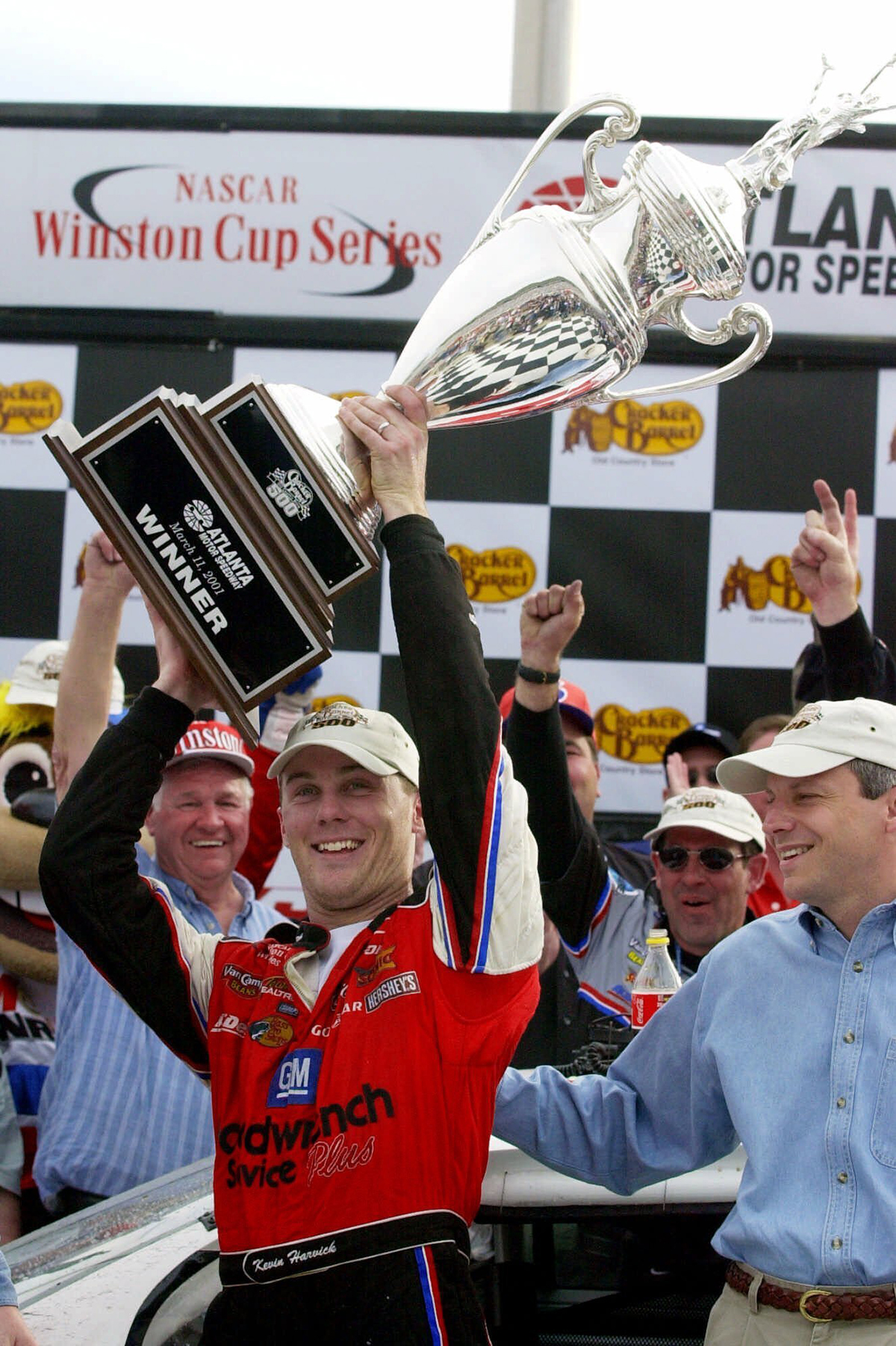 AP photo by Ric Feld / Kevin Harvick holds up his trophy after winning a NASCAR Cup Series race on March 11, 2001, at Atlanta Motor Speedway in Hampton, Ga. Harvick was driving for the GM Goodwrench Chevrolet in place of Dale Earnhardt, who was killed in a crash at Daytona less than a month earlier. Richard Childress Racing rebranded the No. 3 car to the No. 29 to give Harvick his own identity.
AP photo by Ric Feld / Kevin Harvick holds up his trophy after winning a NASCAR Cup Series race on March 11, 2001, at Atlanta Motor Speedway in Hampton, Ga. Harvick was driving for the GM Goodwrench Chevrolet in place of Dale Earnhardt, who was killed in a crash at Daytona less than a month earlier. Richard Childress Racing rebranded the No. 3 car to the No. 29 to give Harvick his own identity.THE FAST TRACK
Team owner Richard Childress had big plans for Kevin Harvick, a 25-year-old driver from California who was competing in the second-tier circuit sponsored by Busch at that time. Harvick had shown enough skill in one season that Childress announced at the start of 2001 he was promoting Harvick to the top level the following year.
Earnhardt had given no indication of slowing down, but he was 49 and realistically nearing the end of his career. With Harvick, Childress had a potential star capable of carrying RCR into the future.
Childress had to push Harvick into Earnhardt's seat a year earlier than planned, rebranding the No. 3 to the No. 29 to give Harvick his own identity. When Harvick won three weeks after Earnhardt's death, he celebrated with three fingers out his window at Atlanta Motor Speedway.
Yet Harvick struggled to escape Earnhardt's shadow in the formative years of his Cup Series career.
"Everything that you did was always compared to everything that Dale did," Harvick said. "I became defensive. I didn't want to do anything that was the same way (as Earnhardt) just because I got tired of hearing it."
Harvick eventually found his own identity, and thanks to his own sponsors and own crew, was able to distance himself from Earnhardt. He won the 2007 Daytona 500 driving for RCR but eventually left to join Stewart-Haas Racing before the 2014 season. Harvick was rewarded for the bold move that year with his only Cup Series championship, and he has remained a perennial title contender, scoring 35 of his 58 career victories with SHR.
Changing teams, Harvick said, helped validate his career.
"We're 20 years later," Harvick said, "and it's forever going to be compared."
LOSS OF A FRIEND
Childress, now 75, often wonders what NASCAR would look like had Earnhardt survived. Childress was far more than Earnhardt's car owner. The two were hunting and fishing buddies, business associates and close friends.
"He would call me at night at home, even when he was building his race teams and say, 'I know you're having that glass of wine. Let's talk a while,'" Childress said. "I miss those moments and so many things. It's been tough, and not only tough on me and the family, but I think on the race fans.
"I think a lot of them haven't gotten over it yet. And I haven't gotten over the loss. I think about it. There aren't many days that go by when I don't remember something about Dale."
Earnhardt was the linchpin of RCR, the team he joined in 1984 and where he won six of his season titles. He won the 1998 Daytona 500 - after years of heartbreak, finally taking the checkered flag at "The Great American Race" secured the missing piece to an otherwise sterling career - and singlehandedly shaped RCR into one of NASCAR's elite teams.
After his death, the team began a slow fade.
RCR hasn't won a Cup Series title since Earnhardt's seventh in 1994, and the success of its two-car stable has been limited to the team owner's grandson, Austin Dillon, who has three one-win seasons in the past four years. In Sunday's season opener, RCR will field cars for Dillon and Tyler Reddick.
LIVING PROOF
Newman, who once drove for RCR, is the ultimate testament to NASCAR's changes. He missed just three events after his accident (partly because of the pandemic hiatus) and is back for his 20th full season.
He realizes Earnhardt's death saved his life - but Newman prefers to remember his childhood idol by what he accomplished in life.
"I knew him as the guy that drove the black 3 car, and if he didn't win it outright, he'd knock somebody out of the way to get it done and stood in victory lane and smiled about it," Newman said. "Unfortunately, because of the way the book ended for him, there's a different version of that legacy.
"I feel fortunate that my book, or at least that chapter, didn't end that way for me. And we did learn a lot from what happened to him. We collectively have kept so many drivers alive since then because of the adjustments that have been made in the safety of our sport."
